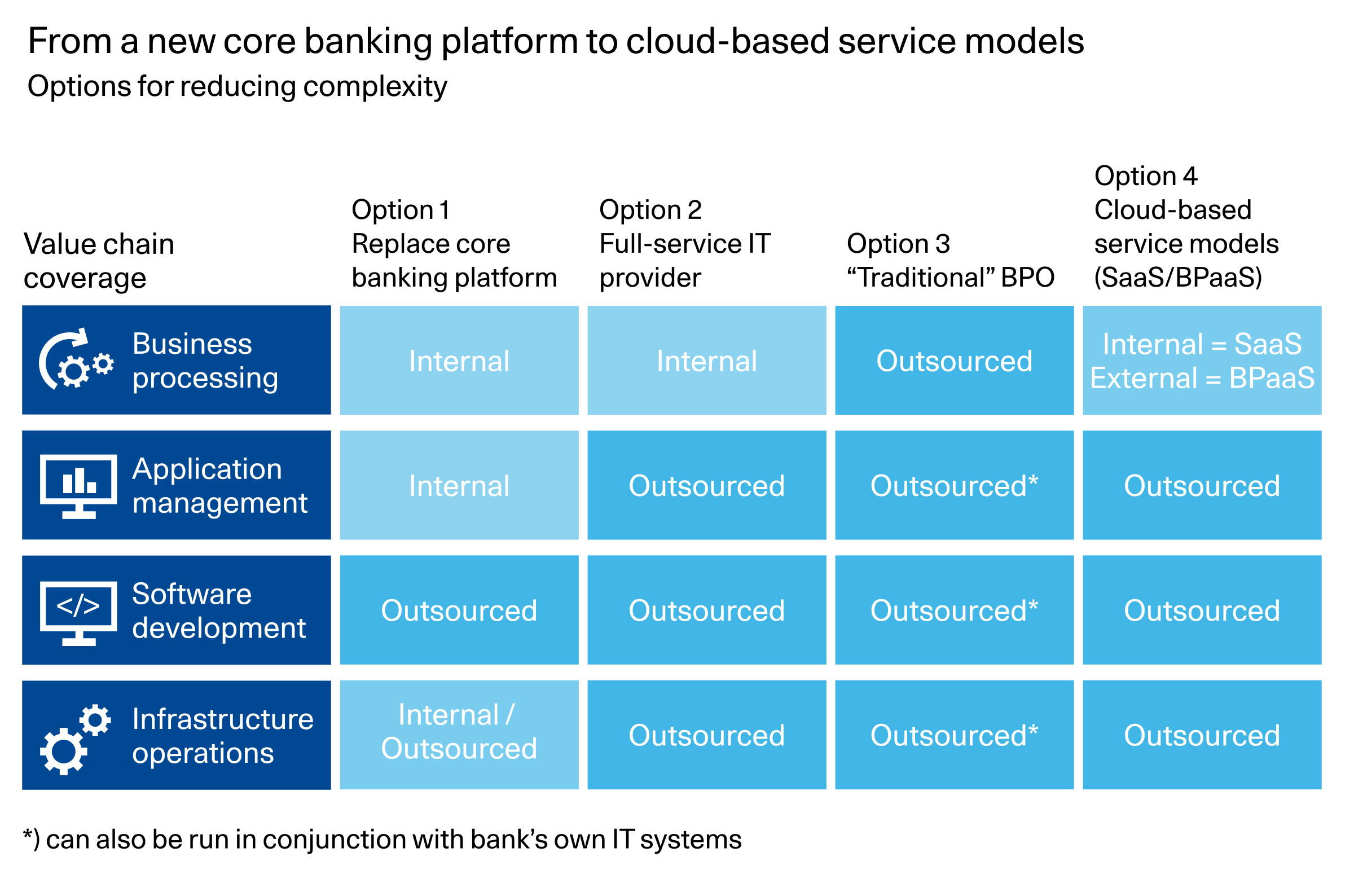BPaaS allows banks and wealth managers to outsource back-office business processes to a service provider. In doing so, it allows banks and wealth managers to focus on what is important to them – their clients. Unlike other outsourcing models, BPaaS providers use their own banking software, infrastructure and expertise via a cloud delivery model. By using their own technology, they are able to undertake more complex processes, drive automation and standardize – all with vast scale. Banks and wealth managers receive highly reliable and secure service, but with the flexibility of a cloud-based service model.
One way of thinking about this is that BPaaS providers are offering an off-the-shelf banking as a service (BaaS) to their financial services clients.
A catch-all solution
While BPO, SaaS and IaaS have their own advantages, BPaaS can combine their many benefits and provide an all-encompassing solution for banks looking to reduce their procedural and organizational complexity. The process of managing multiple vendors can itself become complicated with an array of contracts, interdependencies, service level agreements and process mismatches. With BPaaS, a single vendor can provide end-to-end implementation and take care of all the required dependencies itself.

Scalability and flexibility
The biggest advantage that BPaaS offers is operational scalability and the associated flexibility that this delivers to the management team. Cloud-based SaaS solutions offer scalability in terms of systems, but BPaaS offers scalability in terms of processes as well. For example, if a bank or wealth manager has a sudden increase in the volume and range of securities it needs to process, a BPaaS solution would allow them to scale up their processing based on this unexpected demand rather than having to hire and train extra back-office staff.
Reliability and exception handling
A major problem with traditional back-office processing is the level of human interaction required for a number of what may be considered exceptional processes in a single bank. BPaaS solutions minimize human interaction to an absolute minimum by focusing on automation of processes that have been standardized across multiple banks and wealth managers. The rare exceptions can then be targeted by expert teams. The decline in error rates and associated costs of exception handling makes the investment for the bank or wealth manager worthwhile.
Speed and efficiency
BPaaS solutions are typically faster and more efficient at processing orders than traditional solutions. Service providers specialize in the services that they offer and operate them on scale, based on standardized, automated processes. The vast majority of orders are executed in real time between machines, with validation and four-eyes checks by dedicated teams. This increases straight-through processing (STP) of orders to a wider set of financial assets without compromising on accuracy or the level of diligence.
Redundancy and risk management
According to a KPMG study, cyberthreats are taking centre stage and CEOs are becoming increasingly worried about business continuity, data leaks, reputational damage and other digital dangers. Cloud-based solutions provide banks and wealth managers with redundancy and risk management benefits without having to worry about building local technical expertise or continuously upgrading systems. This can save a tremendous amount of money in local training and hiring but, more importantly, prevent a cyber attack which can potentially cause an even bigger catastrophe and financial impact.
Making the transition
Banking and wealth management BPaaS providers usually follow the best industry practices for mid and back-office functions, allowing banks and wealth managers to avoid many internal changes to their own organizational structure. However, switching over some processes, even if they are not core business activities, can be a daunting prospect for companies. After all, the stakes are generally high – as are the benefits.
The key here is to first select the right business partner with a strong track record and governance framework to implement BPaaS. It is also crucial to spend the time to ensure that their ethos and business philosophy are compatible with your business.
Depending on the processes you want to outsource, several months could be spent on drawing up detailed plans before implementation. However, the beauty of BPaaS solutions is that a standard service can be up and running immediately – the risk of a big-bang failure is no more.
Ready to take your banking operations to the next level?
Discover how Avaloq's scalable business process as a service can help you focus on serving clients, while increasing operational resilience and cost efficiency.






